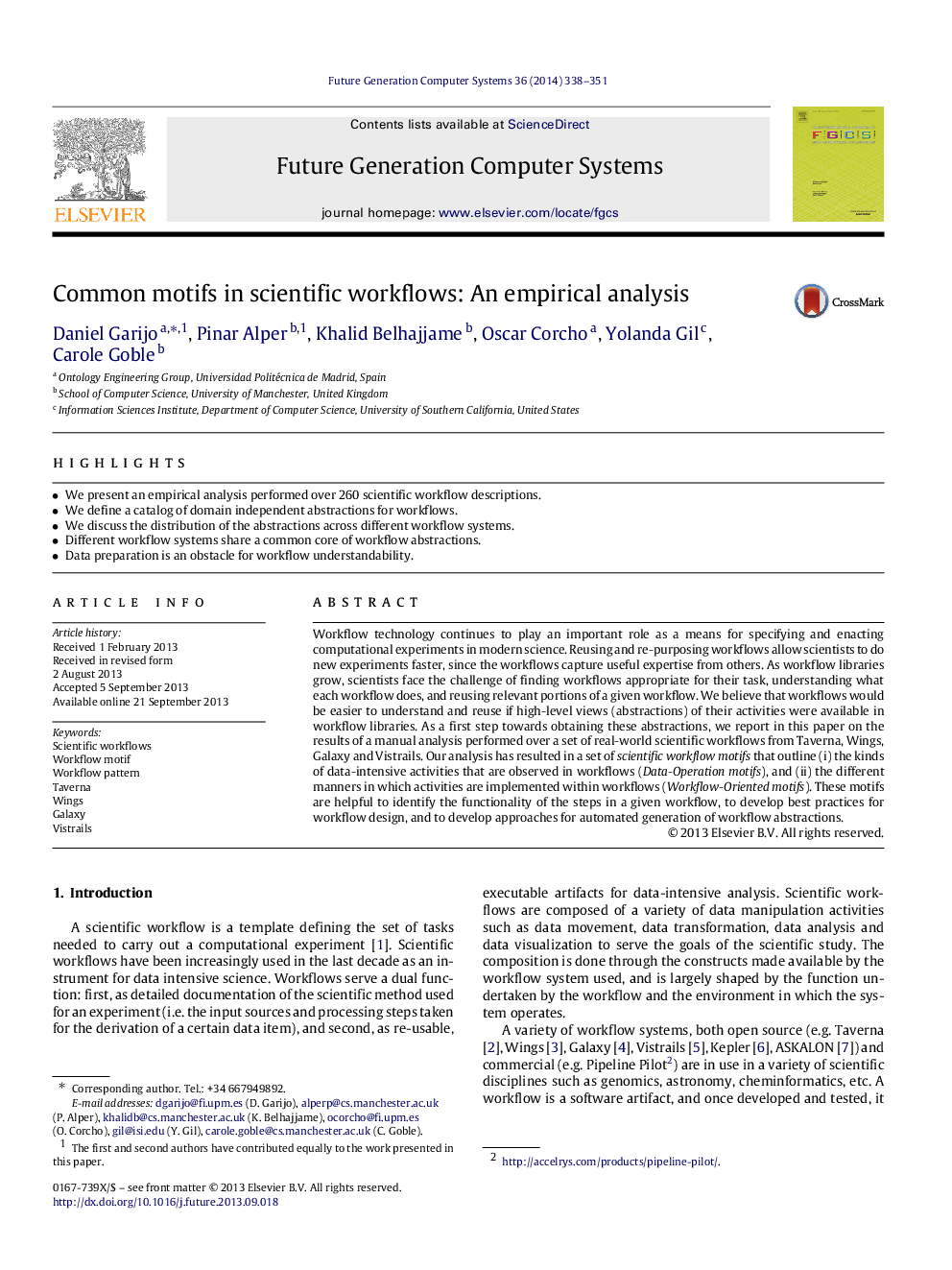| Article ID | Journal | Published Year | Pages | File Type |
|---|---|---|---|---|
| 425268 | Future Generation Computer Systems | 2014 | 14 Pages |
•We present an empirical analysis performed over 260 scientific workflow descriptions.•We define a catalog of domain independent abstractions for workflows.•We discuss the distribution of the abstractions across different workflow systems.•Different workflow systems share a common core of workflow abstractions.•Data preparation is an obstacle for workflow understandability.
Workflow technology continues to play an important role as a means for specifying and enacting computational experiments in modern science. Reusing and re-purposing workflows allow scientists to do new experiments faster, since the workflows capture useful expertise from others. As workflow libraries grow, scientists face the challenge of finding workflows appropriate for their task, understanding what each workflow does, and reusing relevant portions of a given workflow. We believe that workflows would be easier to understand and reuse if high-level views (abstractions) of their activities were available in workflow libraries. As a first step towards obtaining these abstractions, we report in this paper on the results of a manual analysis performed over a set of real-world scientific workflows from Taverna, Wings, Galaxy and Vistrails. Our analysis has resulted in a set of scientific workflow motifs that outline (i) the kinds of data-intensive activities that are observed in workflows (Data-Operation motifs), and (ii) the different manners in which activities are implemented within workflows (Workflow-Oriented motifs). These motifs are helpful to identify the functionality of the steps in a given workflow, to develop best practices for workflow design, and to develop approaches for automated generation of workflow abstractions.
